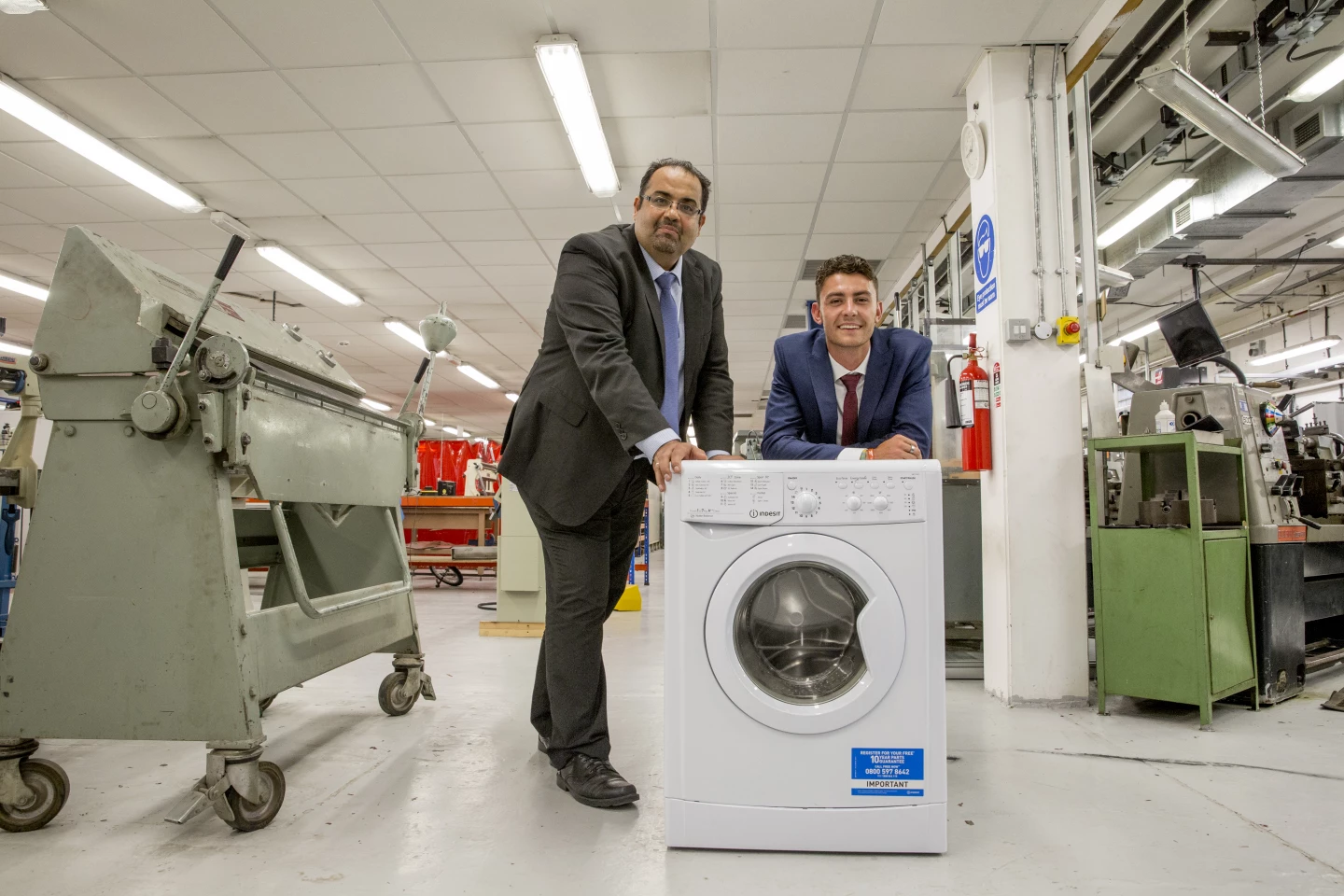As anyone who has ever tried to move one around will know, washing machines can be very heavy. Some of that weight is due to concrete blocks installed inside to help keep the machine stable during spin cycles. News out of Nottingham Trent University could be music to the ears of white goods transporters and home owners alike. Researchers have developed a plastic counterweight to replace the concrete blocks, which is hollow and light until delivery and then filled with water.
The average front loading washing machine on sale in the UK seems to weigh somewhere between 65 and 75 kg (140 - 165 lb), with about 25 kg of that being concrete blocks used to counter drum spin forces during a wash cycle. Professor Amin Al-Habaibeh and undergraduate Dylan Knight from Nottingham Trent University have developed a plastic replacement for the concrete that slashes the overall appliance weight by as much as 30 percent, making it potentially less costly to transport and easier to manhandle in the home.

"Concrete is actually quite bad for the environment due to the CO2 released when it's produced," said Knight. "The use of concrete is also the reason why washing machines are normally very heavy to move."
The team's plastic counterweight is hollow and empty during transport, where it weighs less than 3 kg (6.5 lb). When the washing machine is delivered to its new home, the tank is filled with water and sealed. "We found it worked as good as a concrete counterweight, stopping the spinning drum from heavily vibrating the machine," reported Knight.
Concrete has a greater density than water, so the new container has been made larger than the concrete blocks it replaces in an effort to close the density gap. The university told us that the team is currently working with its industrial partner to further improve the design ahead of pitching the project to appliance manufacturers.
The researchers reckon that 3.5 million washing machines are sold in the UK every year, and estimate that switching out concrete blocks for the NTU device could save around 45,000 tonnes of CO2 each year, while also reducing transport fuel consumption by nearly 184,000 liters.
Source: Nottingham Trent University





